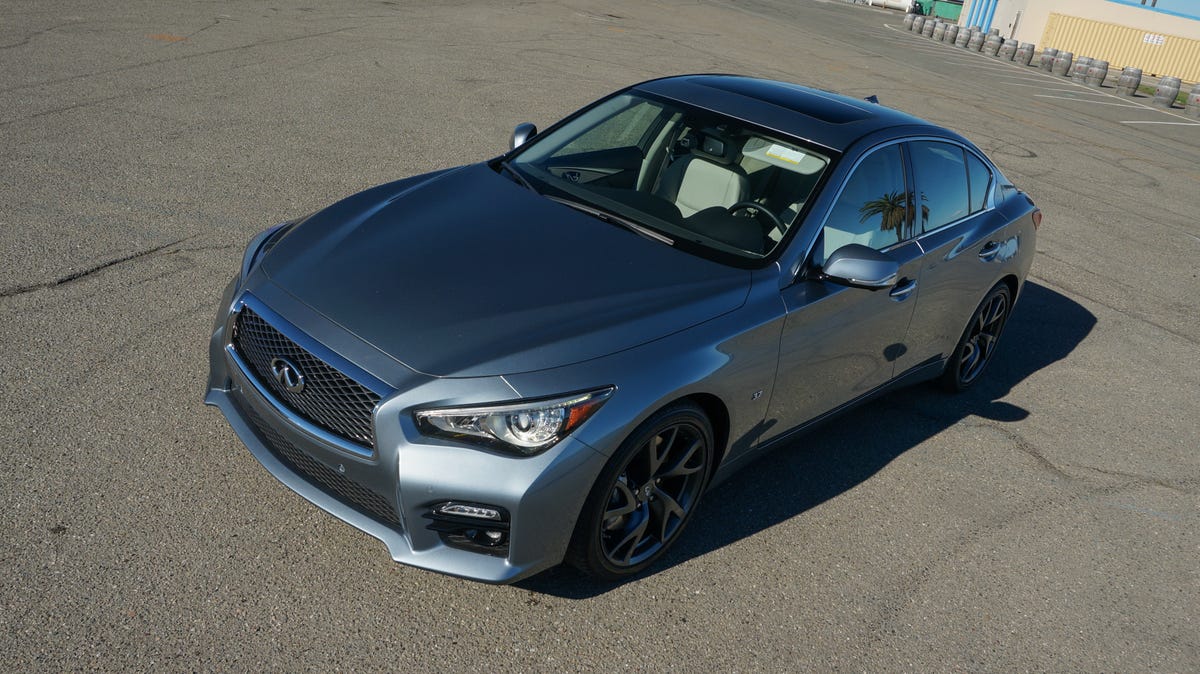Infiniti's sport sedan puts a new look to an old formula (pictures)
We still dig Infiniti's Q50S despite the fact that it is still powered by the same old engine from its predecessor, the G37 sport sedan.

The Infiniti Q50S is a sharply styled ride with tautly drawn sheet metal over sporty proportions.
However, beneath its modern styling this 2015 model hides an aging heart.
Behind the infinite-horizon badge breathes the same 3.7-liter engine that's powered this automaker's sport sedans since 2008.
Old it may be, but the VQ37VHR engine is no slouch. Output is stated at 328 horsepower and 269 pound-feet of torque.
The Q50 is available in either all-wheel or rear-wheel drive configurations.
Power flows through a seven-speed automatic transmission on its way from the engine to the asphalt.
Even laden with older tech, the Infiniti doesn't slack in the safety tech department.
The Q50 features forward-facing radar, side-firing sonar sensors and cameras pointed in all four directions.
The side cameras, front and rear, are used at low speeds as parking aids.
You can select forward, side and rear views, as well as the automaker's Around View camera, which combines all four angles into a bird-eye look at the area around the car.
The Q50 is also outfitted with optional adaptive cruise control, forward precollision intervention, blind-spot monitoring and assist, and other features.
Infiniti was the first to market with many of these features, so their appearance in the Q50 is no surprise.
Infiniti's dashboard tech features a two-screen setup: an upper 8-inch screen stacked atop a 7-inch secondary display.
The upper touchscreen operates with resistive sensitivity and is the main display for navigation.
The lower display is a capacitive touch screen that is used to control secondary functions, such as choosing audio sources, climate controls and Infiniti's apps integration.
A display in the center of the instrument cluster showcases the status of the driver aid systems, fuel economy and trip info.
The seven-speed automatic transmission features paddle shifters mounted on the steering column.
One feature that I liked was the ability to quickly toggle the various driver aid technologies with a single press of the button that looks like a car surrounded by a forcefield.
Through Infiniti's menu system, the steering weight and responsiveness can be individually tuned to the driver's preference.
In addition to the two touchscreens, the Q50 also features a physical control knob and steering-wheel controls that both affect the upper display's functions. I think that's just too many control options to master.
The gearbox and engine's performance are affected by the Q50's four driving modes: sport, normal, comfort and custom.
The cabin is quite spacious, with a double-arc design that bends the dashboard away from and around the front seats' occupants.
The information display does a good job of letting the driver know what systems are active, but not of giving information about what those systems are doing.
With push-button start and intelligent keyless entry, the driver doesn't have to remove the fob from his or her pocket before hitting the road.
A suite of connected features and apps boosts the dashboard's functionalities, but lags behind the newer competition.
Most of Infiniti's "apps" are simple things like a compass, clock and performance meter.
Though aging, the 2015 Q50S is still a solid alternative for sport sedan drivers.
Thankfully, Infiniti is giving the Q50 a much-needed update for the 2016 model year with a new line of more powerful and efficient engines. We can't wait.

